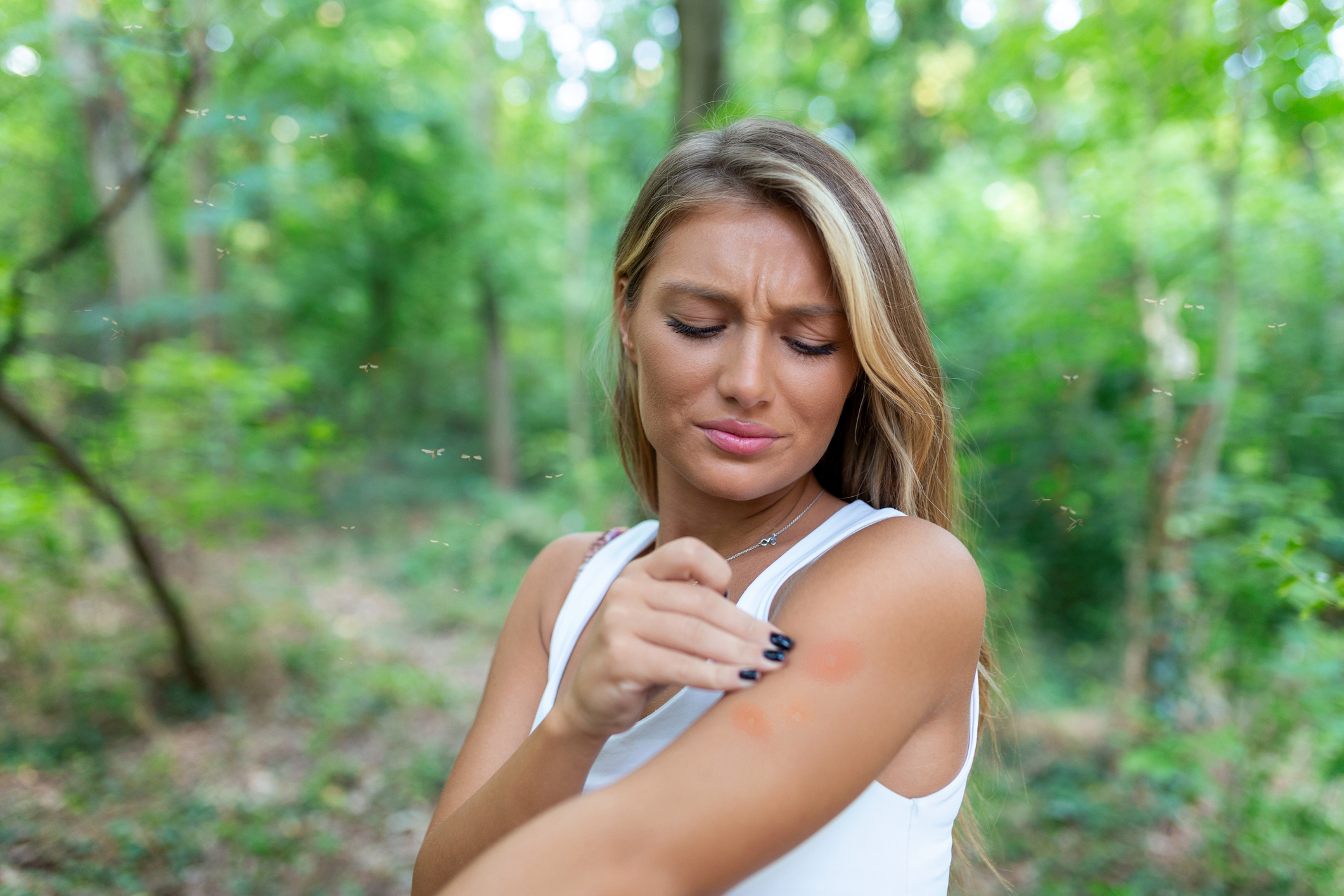
It’s important to understand the steps to treat a bee sting as well as signs that you may be experiencing a bee sting allergy and need to seek further medical care. Explore our bee sting guide for what you should know about bee stings, allergies, and treatments.
About Bee Stings
What Does a Bee Sting Look Like?
A typical local reaction to a bee sting appears as a small, red welt or swelling around the sting site. There may be a central white or black dot that appears where the stinger punctured the skin. There is often an instant, sharp burning pain at the sting site. The swelling and pain typically go away within a few hours for most people. Recognizing the signs of a bee sting can help you act promptly to alleviate discomfort and treat your bee sting effectively.
How to Treat a Bee Sting
For mild stings that do not cause an allergic reaction, home remedies will often treat the bee sting effectively. Most mild reactions don’t require a visit to your doctor but in the case of a severe or allergic reaction, you should seek medical attention immediately.
Steps to treat a mild or moderate bee sting reaction:
- Remove the stinger: If the stinger remains in the skin, remove it by scraping it with a fingernail, credit card, or another straight-edged object. Avoid using tweezers as they can cause more venom to be released into the body.
- Clean the sting site: Use soap and water to wash the affected site of the sting.
- Apply cold compress: Wrap an ice pack in a towel or cloth and apply it to the skin. Elevate the affected area, if possible, to reduce swelling.
- Monitor for an allergic reaction: Keep an eye on the affected site for signs of a bee sting allergy. If you notice symptoms of an allergic reaction, seek medical attention immediately.
Understanding a Bee Sting Allergy
A bee sting allergy, also known as a Hymenoptera sensitivity, is a potentially severe allergic reaction to venom injected by a bee or similar stinging insect. Understanding bee sting allergy symptoms, treatment options, and prevention tips to reduce the risk of future stings and reactions.
How You Know if You Are Allergic to Bee Stings
Bee stings and other insects can cause a variety of allergic reactions, including:
- Diffuse swelling (swelling beyond the sting site)
- Pain and discomfort
- Redness and inflammation
- Hives (red, itchy welts that appear away from the sting site)
- Difficulty breathing or shortness of breath
- Loss of consciousness
- Anaphylaxis (hypersensitivity reaction)
Anaphylaxis is a severe and life-threatening reaction and should be treated by a medical professional immediately.
What to Do If You Are Allergic to Bee Stings
If you experience any of the bee sting allergy symptoms within a few minutes or several hours after the sting, you should seek medical attention and schedule an allergy consultation with a board-certified allergist for diagnostic testing and a personalized treatment plan. Your allergist will likely utilize allergy skin testing or ImmunoCAP labratory testing to diagnose a bee sting allergy.
How to Treat a Bee Sting If You Are Allergic
Based on your medical history and results from diagnostic testing, your allergist will provide you with a personalized emergency and preventative treatment plan. Treatments for a bee sting allergy may include:
Emergency medications: Diphenhydramine (Benadyrl) or epinephrine auto-injector (i.e. EpiPen or Auvi-Q) are common medications used for bee sting allergies.
Venom immunotherapy: This is the use of allergy shots to treat insect stings. Venom immunotherapy is considered effective in preventing future systemic reactions to bee stings.
Allergen avoidance: Following precautionary measures is important to reduce the risk of another bee sting, causing an allergic reaction.
Prevention Tips to Avoid Bee Sting Allergic Reactions
Avoidance is crucial in managing a bee sting allergy. Although bee stings are often random and unpredictable, we suggest taking precautionary measures to reduce your risk. Review the following tips to reduce your chance of a bee sting:
- Wear long sleeves and clothing that covers as much of the body as possible while outside
- Be cautious and aware of your surroundings during outdoor activities
- Avoid using perfume or hair spray when outside for long periods of time
Manage a Bee Sting Allergy with Impact Medical
At Impact Medical, we understand the importance of having an accurate diagnosis and clear treatment plan in place for bee sting allergies. Schedule an allergy consultation with a board-certified allergist at Impact Medical in New Jersey or New York for diagnostic testing and a personalized treatment plan to effectively manage your bee sting allergy.